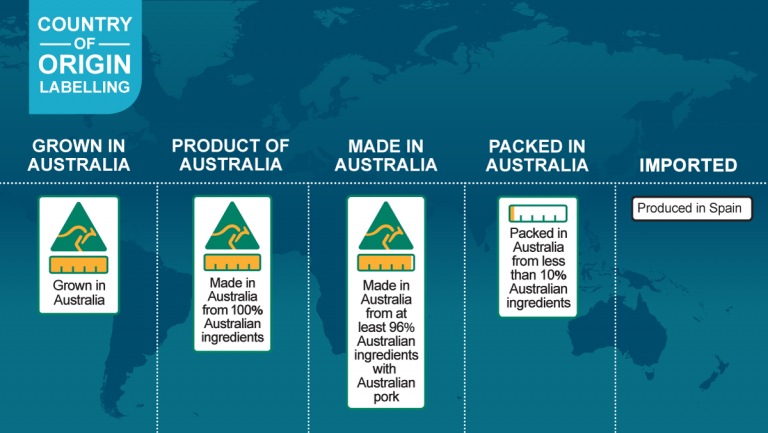
- Print this page
- Download as PDF
- Share this page

What is country of origin labelling?
Country of origin labelling tells us the country, or countries, where a food is grown, manufactured or packaged.
All packaged food must state whether it was made from imported or local produce, or a mixture of both.
Some unpackaged food, including fresh and processed fish, pork, beef, sheep and chicken mince, fruit and vegetables, must also display a country of origin label.
These labels can only be used if the key ingredients in the food originated in Australia and the food is manufactured in Australia:
- Product of Australia
- Produced in Australia
- Produce of Australia
These labels can only be used if the food has been significantly changed or processed in Australia and at least 50% of the cost of production has been incurred in Australia:
- Made in Australia
- Manufactured in Australia
Country of origin labelling is administered under Australian Consumer Law and is not a requirement under the Food Standards Code.
For more information on country of origin labelling, visit the Australian Competition & Consumer Commission website.
Seafood labelling in hospitality
The Australian Government is preparing to introduce mandatory Country of Origin Labelling (CoOL) under Australian Consumer Law for seafood sold in hospitality settings.
Once in place, the change will mean restaurants, cafes and similar businesses will need to show where their seafood is from, as either Australian, imported or mixed origin.
Have your say
The Department of Industry, Science and Resources is seeking feedback on an exposure draft information standard and draft explanatory statement that could be used to introduce these changes.
The information standard proposed would require businesses to use a letter – at a minimum – to indicate the seafood’s origin:
- A (Australian)
- I (imported)
- M (of mixed origin containing both Australian and imported seafood).
Your feedback will ensure these materials are practical, effective, and beneficial for both businesses and consumers.
The consultation is open on the department’s consultation hub until 17 April 2025.
